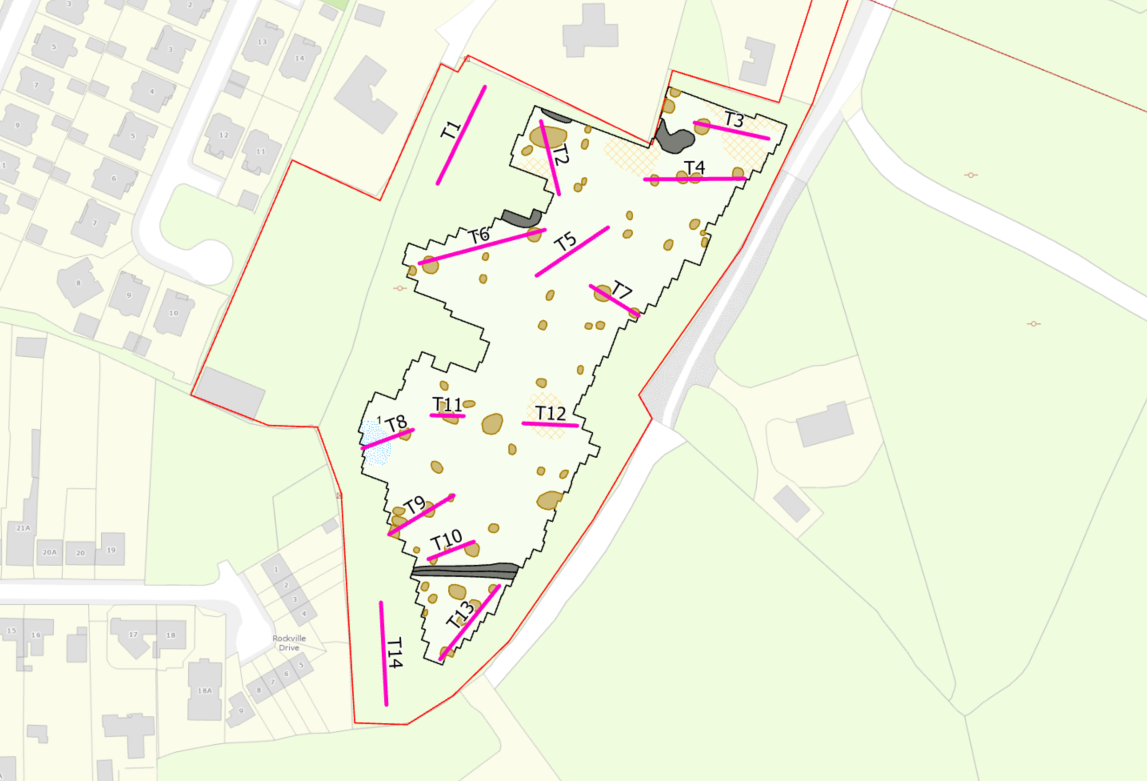2025:010 - Carrickmines Great, Dublin
County: Dublin
Site name: Carrickmines Great
Sites and Monuments Record No.: N/A
Licence number: 25E0094
Author: Catriona Baldwin
Author/Organisation Address: Lynwood House, Ballinteer Road, Dublin 16
Site type: Fulacht fiadh
Period/Dating: Prehistoric (12700 BC-AD 400)
ITM: E 721475m, N 723174m
Latitude, Longitude (decimal degrees): 53.245023, -6.179913
Archaeological testing took place over 2 days from 4 February 2025. The purpose of the programme of archaeological testing was to establish if the anomalies identified through the geophysical survey are archaeological or are due to modern disturbances as suspected. One trench targeted a potential burnt mound identified in the geophysical survey.
The majority of the anomalies identified in the geophysical survey proved to be either large granite boulders, collapsed or partly collapsed stone drains or patches of manganese-rich soil. However, the testing did reveal an extensive spread of burnt mound material in Test Trench 8. The spread, which was approximately 0.3m deep and comprised of a dark-black brown sandy clay with frequent inclusions of heat-affected stone and charcoal, is thought to be the remnants of a ploughed out fulacht fiadh. No dateable finds or animal bone were recovered from the feature.
No additional archaeological finds, features or deposits were identified across the site during the testing.

